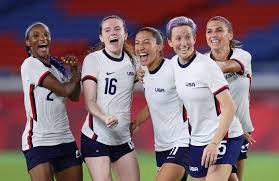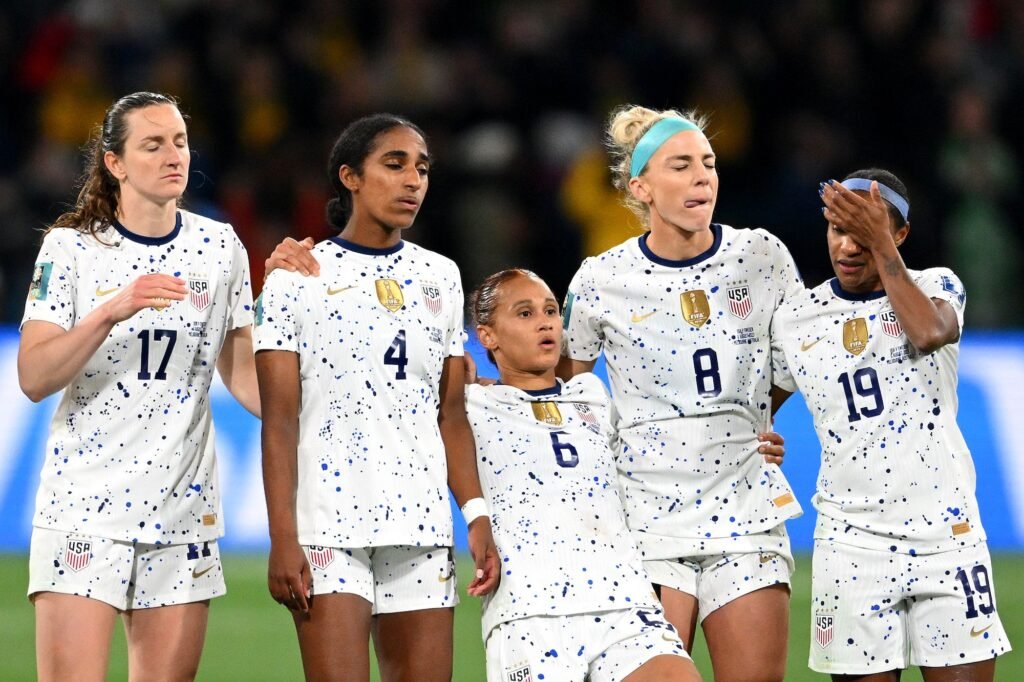The future of women’s soccer in the U.S. is bright, bold, and rapidly evolving. From dominating the world stage to building a stronger professional league at home, American women’s soccer has come a long way—and its next chapter looks even more exciting.
As we look ahead, many big questions emerge: Who are the rising stars? Will the U.S. women’s national team (USWNT) continue its legacy? Can the NWSL grow to rival men’s leagues? And what about equal pay?
In this article, we break down the key developments shaping the future of women’s soccer in the U.S., exploring everything from youth development to media coverage, and even what to expect at the next World Cup.
A New Generation Is Taking Over
The U.S. Women’s National Team (USWNT) has seen legends like Megan Rapinoe, Alex Morgan, and Becky Sauerbrunn begin to step aside. A younger generation is now taking center stage, and they’re bringing new energy, skills, and leadership.
Rising Stars to Watch
- Trinity Rodman (Washington Spirit): Dynamic, fearless, and incredibly fast, Rodman is becoming a face of the next generation.
- Sophia Smith (Portland Thorns): A goal-scoring machine with quick feet and big-game presence.
- Alyssa Thompson (Angel City FC): The teenager already looks comfortable at the pro level and could be a future World Cup star.
- Naomi Girma (San Diego Wave): Calm and smart in defense, Girma brings the kind of leadership every backline needs.
These players are not just talented—they’re also marketable. With smart branding, sponsorships, and media exposure, they’re building personal platforms that help grow the game.
NWSL’s Growth: More Teams, Bigger Audiences

The National Women’s Soccer League (NWSL) is the main professional women’s league in the U.S., and it’s growing faster than ever. With more investment, better facilities, and improved pay, the NWSL is becoming a global leader.
Key Signs of Growth
- New Teams: The NWSL now includes 14 teams, with new franchises in places like San Francisco and Boston.
- Bigger TV Deals: Broadcast partnerships with CBS, ESPN, and Amazon Prime are putting games on more screens.
- Higher Salaries: The average player salary has more than doubled since 2020.
- Star Power: International players like Debinha and Marta play in the league, raising the profile and level of play.
With stronger marketing and partnerships, the NWSL could one day rival the popularity of men’s leagues in the U.S.—especially among younger fans who are already highly engaged.
Equal Pay: A Long Battle With Big Wins
One of the most important stories in women’s sports over the last decade has been the fight for equal pay. The USWNT led this battle, and in 2022, they finally achieved a groundbreaking agreement with U.S. Soccer.
What the Equal Pay Deal Includes
- Equal Match Pay: Men’s and women’s national teams now receive equal payments for games and tournaments.
- Shared World Cup Bonuses: For the first time, prize money is split equally between the men’s and women’s teams.
- Revenue Sharing: Players also receive a share of broadcast and sponsorship revenue.
This deal sets a global example and shows that fairness in sports is possible. While challenges still remain at the club level and globally, this is a massive step forward.
Youth Development Is Key to the Future
If the U.S. wants to stay at the top of women’s soccer, it must invest in the next generation. Youth programs, club academies, and college soccer all play a part in developing top talent.
Changes Happening Now
- More U-17 and U-20 Camps: The U.S. Soccer Federation is focusing more on developing players from a younger age.
- Professional Pathways: More teenage players are skipping college and signing with NWSL teams or going overseas.
- Better Coaching and Facilities: Programs like Girls Academy and ECNL are raising standards across the country.
One big challenge: accessibility. Many young players from lower-income communities still struggle to afford top-level youth programs. Solving this will be critical to the sport’s long-term success.
Media Coverage Is Finally Catching Up
For years, women’s soccer didn’t get the coverage it deserved. But things are changing—fast.
What’s Improving
- Major Network Coverage: Networks like CBS, Fox, and NBC are airing more women’s games during prime time.
- Streaming Services: Platforms like Paramount+, ESPN+, and Amazon are making games easy to find.
- Social Media Reach: Players and teams are using TikTok, Instagram, and YouTube to connect directly with fans.
Better media coverage leads to more fans, more ticket sales, and more sponsorships. It’s a cycle that’s just beginning to accelerate.
The World Cup: What’s Next for the USWNT?

The 2023 Women’s World Cup didn’t go as planned for the U.S. The team exited earlier than expected, and critics raised questions about coaching, tactics, and player selection. But that failure may turn out to be a blessing.
What to Expect in 2027
- New Coach, New Vision: With a new coaching staff likely in place, expect a fresh tactical approach.
- More Experience: Young stars from 2023 will be seasoned pros by 2027.
- High Expectations: The U.S. will always be a favorite—but competition is fierce. England, Spain, and France are getting stronger.
To win in 2027, the U.S. will need to adapt, grow, and play smarter soccer—not just rely on tradition or physical strength.
More Women in Leadership Roles
Another exciting development: more women are stepping into leadership roles across U.S. soccer.
Examples
- Jessica Berman (NWSL Commissioner): Her leadership is transforming the league’s image and operations.
- Former Players Becoming Coaches: Icons like Carli Lloyd and Heather O’Reilly are moving into coaching and media.
- Front Office Representation: More women are being hired as team presidents, GMs, and directors of player development.
Representation matters—not just on the field, but off it. It creates a system where women’s voices shape the future of the sport.
The Olympic Effect: A Stepping Stone
The 2024 Paris Olympics will be a key moment for U.S. women’s soccer. A strong showing could restore confidence and build momentum heading into the next World Cup.
Why the Olympics Matter:
- The shorter format is intense and high-profile.
- It’s a chance for new stars to shine on a global stage.
- Gold medals bring attention and boost player visibility.
A dominant Olympic run would remind the world that the USWNT isn’t going anywhere.
Challenges Still Ahead
Despite all the positive signs, the future of women’s soccer in the U.S. isn’t without obstacles:
- Injury Concerns: More games mean more risk—better medical support is needed.
- Club Stability: Some NWSL teams still face ownership issues and funding gaps.
- Global Competition: Other countries are catching up fast, with strong youth systems and club leagues in Europe and Asia.
- Accessibility and Diversity: Soccer must do more to be inclusive and reach all communities.
These aren’t reasons for doubt—but they are challenges that must be addressed to sustain growth.
Final Thoughts: A Promising Future Awaits
The future of women’s soccer in the U.S. is full of promise. With young stars rising, the NWSL expanding, equal pay becoming a reality, and media finally paying attention, there’s never been a better time to be a fan.
From local pitches to global stadiums, women’s soccer is no longer a side story—it’s front and center. The journey isn’t over, but the next chapter is shaping up to be one of the most exciting yet.
Also read – NCAA Football Predictions 2025: Teams, Surprises & Playoff Picks





